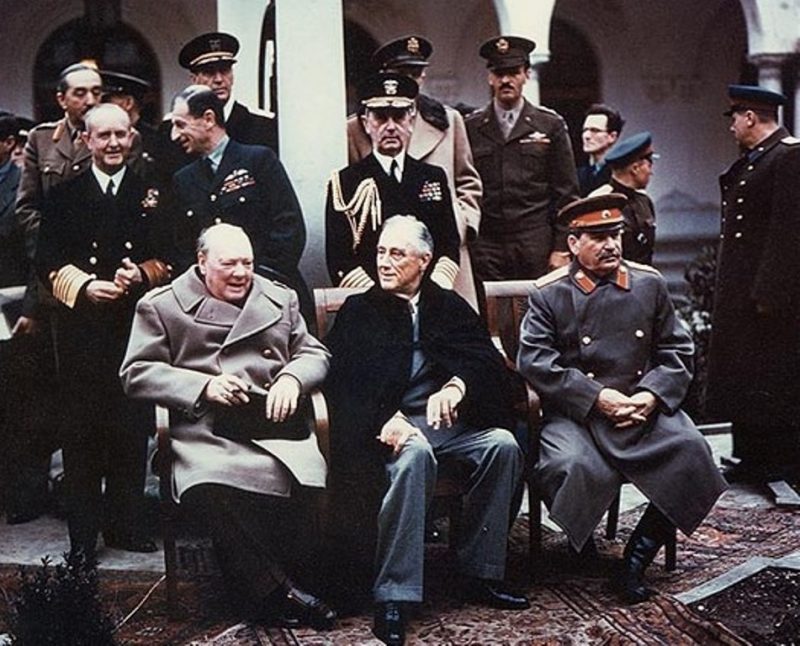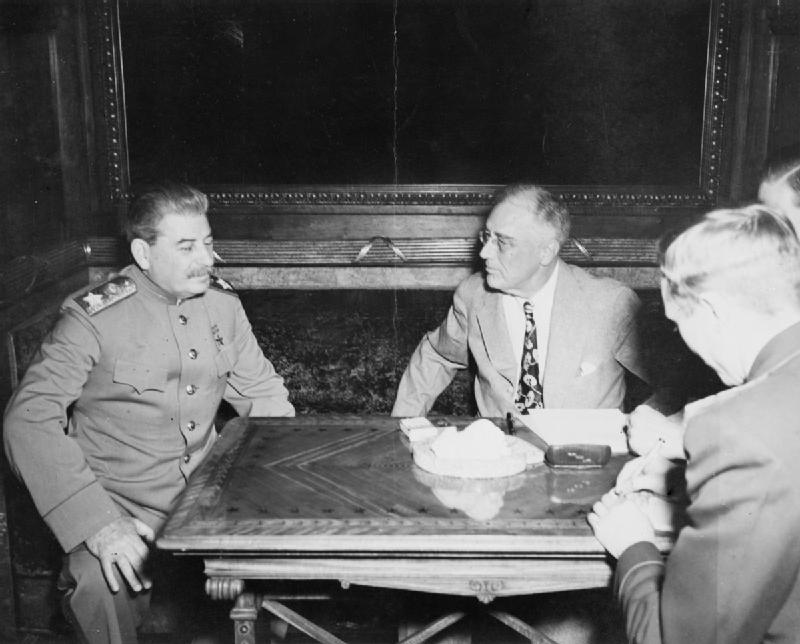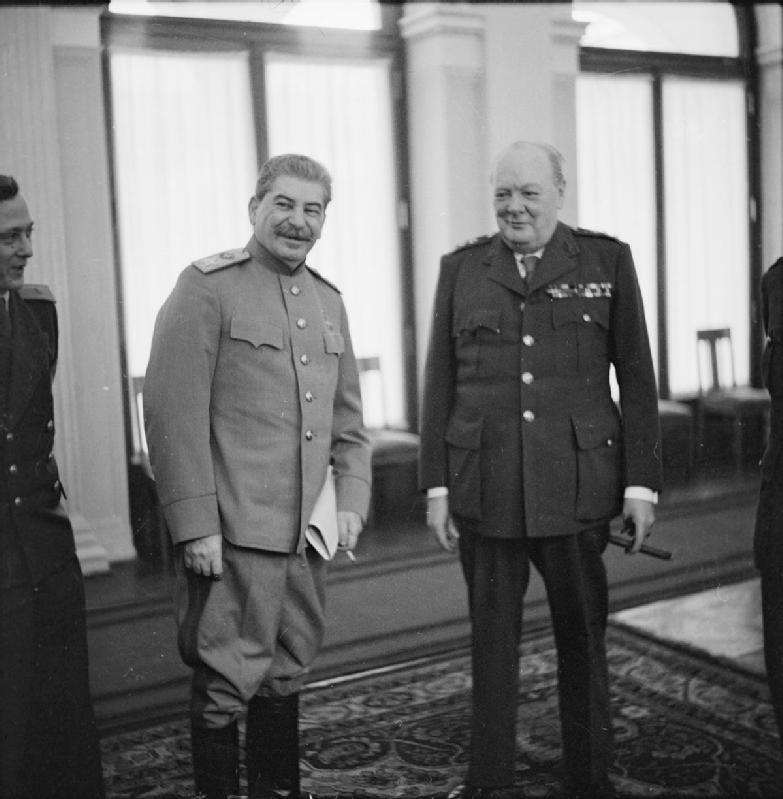In one meeting the groundwork was laid for the Cold War
The Fourth of February, 1945 was as good a day as any for a meeting of the allied leaders. Wearing heavy trench-coats to combat the cold air and with military aides all around, US President Franklin D. Roosevelt, British Prime Minister Winston Churchill and Premier of the U.S.S.R. Joseph Stalin spent the day hammering out the details for post-war Europe. They had to plan for the end of Nazi Germany, having entered a state of total war when a desperate Hitler did everything in his power to hold back the tide of Soviets, English and Americans.
The meeting took place in a small Russian village in the Crimea. Seven days would pass before an accord was reached. It was clear that Stalin, in the end, controlled the conference. This meeting would have the direst of consequences for the next sixty years of world history. The leaders were able to make far faster progress than one would expect in a meeting of three overly ambitious world leaders. The rather fast discourse was partly due to the fact that there had already been some plans made ahead of the meeting.
What were the items discussed? Germany would be divided into regions, with each of the victorious nations having control over one of the zones. To help maintain control over these zones, the entire Germany military would be dismantled, leaving just enough German manpower remaining to provide internal security and stability. In many ways this plan resembled the post-WWI agreement, except that this time the Allies had no intention of abandoning Germany, allowing resentment to foster into yet another globe-spanning conflict in the next few decades.
The Polish borders were agreed upon in this meeting, and a decree that all liberated nations would have the right to free elections. However, Stalin was able to muscle in that all nations bordering Russia would be friendly to the idea of the Soviet Party — a cruel twist in the plot, as it turns out. The irony was that this was technically what had been the basis of the Molotov-Ribbentrop Pact that propelled Nazi Germany and Russia to initiate WWII to begin with. Stalin wanted Eastern Europe, and he had managed to get it from both the Allies and the Axis powers.
Roosevelt has forever since been judged as having sold Eastern Europe out to the Soviets. However, most of the political, and indeed, much of the military, opinion in the US was that the European War was actually a nuisance that got in the way of what their true goal should be; the destruction of Imperial Japan. Unlike German soldiers who would surrender, and a German populace that would choose against the Nazi Party, the average Japanese citizen believed the Emperor was a God and their Code of Bushido did not allow for surrender. Japan was well capable of fighting a war of attrition; even if it lost, hundreds of thousands would die.
Of course, this was before anyone understood how powerful a game-changer the atomic bomb would be. The Allies needed troops, and Stalin agreed to sending troops against Japan if the other leaders would merely acquiesce to his demands for Eastern Europe. Not only did he achieve his goals for Eastern Europe, Stalin had hiseye on lands lost to Japan in the Russo-Japanese War.
The war ended, and at once the Soviet Union reneged on its commitments. No free elections were ever held in the Eastern Block of Europe. The refusal to do what they had promised to do even prompted Churchill to propose a plan that involved using nukes against the Russians and launching a campaign against them. This was voted as ridiculous due to how poorly the British, French and American troops would fare in Europe against a Russian juggernaut,
the New Historian reports.
In the end, the Yalta Conference became the foundation of the Cold War. The plan to end the war would effectively split the world for decades to come. Eastern Europe was split in two and wouldn’t be rejoined until Communism fell in the 1990’s.



